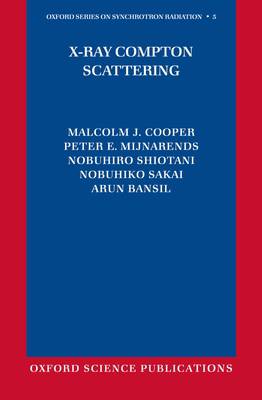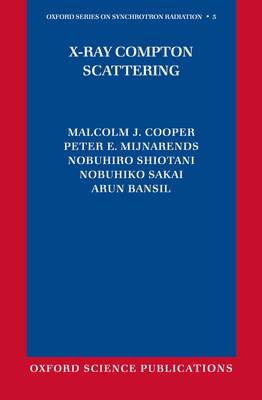
Door een staking bij bpost kan je online bestelling op dit moment iets langer onderweg zijn dan voorzien. Dringend iets nodig? Onze winkels ontvangen jou met open armen!
- Afhalen na 1 uur in een winkel met voorraad
- Gratis thuislevering in België vanaf € 30
- Ruim aanbod met 7 miljoen producten
Door een staking bij bpost kan je online bestelling op dit moment iets langer onderweg zijn dan voorzien. Dringend iets nodig? Onze winkels ontvangen jou met open armen!
- Afhalen na 1 uur in een winkel met voorraad
- Gratis thuislevering in België vanaf € 30
- Ruim aanbod met 7 miljoen producten
Zoeken
Omschrijving
With the development of potent x-ray sources at many synchrotron laboratories worldwide, Compton scattering has become a standard tool for studying electron densities in materials. This book provides condensed matter and materials physicists with an authoritative, up-to-date, and very accessible account of the Compton scattering method, leading to a fundamental understanding of the electrical and magnetic properties of solid materials. The spectrum of Compton scattered x-rays is particularly sensitive to this behavior and thus can be used as a direct probe and to test the predictions of theory. The current generation of synchrotron facilities allows this method to be readily exploited to study the ground state electron density in both elements and in complex compounds. It is important that those working in related fields, as well as the increasing number directly using the Compton method, have a comprehensive assessment of what is now possible and how to achieve it, in addition to a full understanding of its theoretical basis. This monograph is unique and timely, since little of what is described, was practicable a decade ago. The development of synchrotron radiation facilities has ensured that the technique described here will remain a powerful probe of electron charge and spin density for many years to come.
Specificaties
Betrokkenen
- Auteur(s):
- Uitgeverij:
Inhoud
- Aantal bladzijden:
- 392
- Taal:
- Engels
- Reeks:
- Reeksnummer:
- nr. 5
Eigenschappen
- Productcode (EAN):
- 9780198501688
- Verschijningsdatum:
- 30/12/2004
- Uitvoering:
- Hardcover
- Formaat:
- Genaaid
- Afmetingen:
- 156 mm x 234 mm
- Gewicht:
- 725 g

Alleen bij Standaard Boekhandel
+ 708 punten op je klantenkaart van Standaard Boekhandel
Beoordelingen
We publiceren alleen reviews die voldoen aan de voorwaarden voor reviews. Bekijk onze voorwaarden voor reviews.











